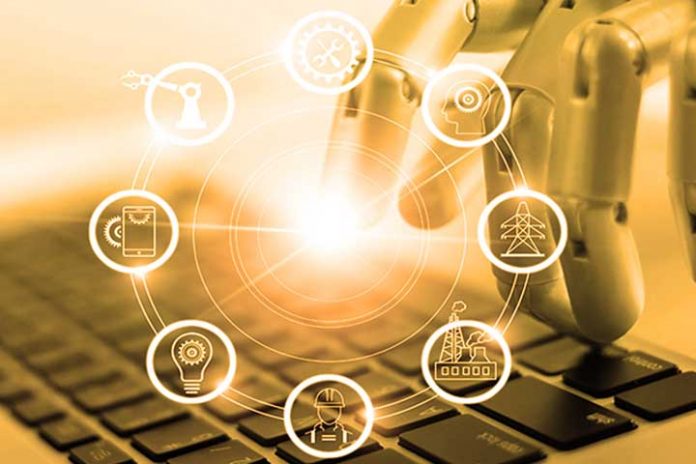“Digitization” – a term that is on everyone’s lips. Not least because of the corona pandemic, hardly any other buzzword has caused such a stir. The last few years have made it clear to all of us that the digitization of the education system and the world of work urgently needs to be promoted in order to remain competitive and not be left behind.
What does digitization mean and how does it work? This article explains digitization in simple terms. It is less about the technical aspects and more about the concrete implementation in the business context.
How digitization works: explained in simple terms
Briefly and simply explained: Technical background
Digitization means that analog values are converted into digital values so that they can be processed and stored in this way.
Analog values can be perceived steplessly – for example in the form of hands that move smoothly across the face of a clock. You can also see the times between two times.
Digital signals, on the other hand, are sent as clearly defined digits and can therefore also be read by machines . That is the great advantage of digitization! The basic principle is to use fixed codes to transmit information electronically.
What does digitization mean?
When talking about digitization, the focus is often not on the technical background – the conversion from analog to digital values. Digitization is rather understood as a synonym for the effects of this transformation.
It is about the introduction and use of digital technology , such as computers and the Internet , and the effects that this digital technology has on our private and business lives .
Digitization is a megatrend : more and more data is being stored, processed, distributed and used to make machines act “intelligently”.
Opportunities and advantages of digitization for companies
Digitalization creates technical possibilities that positively influence the way we work.
Conserve resources
Digitization makes it possible to have certain tasks done automatically by computers, thereby saving money, time and manpower.
Through automation and process optimization, human labor can be used where human qualities are really needed . For example, when social and emotional interactions and problem-solving skills are required.
The digitization of processes also saves resources in the form of paper, wood, water, chemicals for paints and energy for printing and mailing letters.
Learn more about the benefits of going paperless in our post .
Location and time independence
The digital availability of necessary data and documents makes mobile working possible. Whether in the office, in the home office or on the go. Work can be done anytime and from anywhere. This can affect motivation and productivity.
Networking
The independence of time and place, which is made possible by digitization, is also accompanied by the opportunity to network with other teams and company locations. Decentralized and international cooperation becomes possible and that offers enormous potential.
Possible disadvantages of digitization
Investment
Switching to digital technology and processes costs time and money . However, the added value of this investment usually outweighs it in the long term.
Tip: Let strong partners and tools support you in digitizing and optimizing your processes.
Confusion
The possibilities to advance digitization in your company are almost endless . However, what is to be rated positively against the background of tailor-made solutions for almost all applications can lead to disorientation.
In order to be able to take advantage of the many offers here, you should seek advice.
Current developments in digitization
Digitization is progressing rapidly. In order not to lose touch as a company, institution or association, it makes sense to familiarize yourself with the latest advances. This is the only way you can assess which digital developments and tools make sense for you.
Artificial intelligence
Artificial intelligence (AI) refers to applications that ensure that machines learn. This should enable them to make their own decisions in the long term. This is about transferring human learning to a computer.
Internet of things
With the Internet of Things (IoT), devices exchange data with each other via integrated chips, sensors or software. They communicate in this way in order to work more energy-efficiently, for example. A well-known example is the SMART Home.
Further developments
Big data is currently an important development of digitization. Big data means large amounts of data that can only be processed by machines. From this, a lot of important information can be filtered, which can be used for product suggestions, for example.
Cloud computing means applications that are offered decentrally for multiple users. This is particularly relevant for cross-location and international cooperation.
Overall, all of these trends are part of Industry 4.0 . This is the name of the official research agenda that is supposed to deal with the industrial developments of the future.

